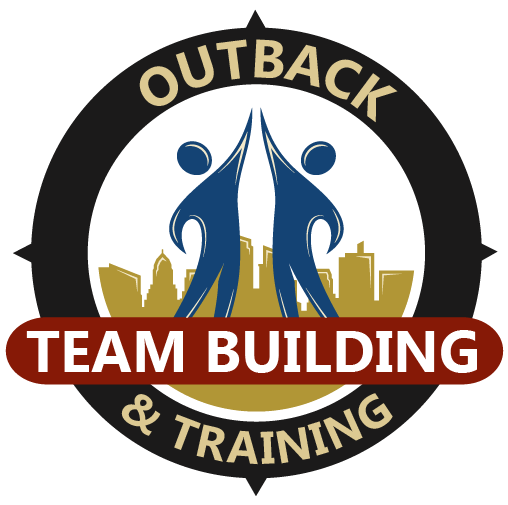Most companies strive to figure out how to improve employee engagement. And while every business is unique in its own way, there are key approaches that can be applied across the board. We spoke with 12 business leaders spanning a diverse array of industries about their employee engagement strategies.

Most companies strive to figure out how to improve employee engagement. And while every business is unique in its own way, there are key approaches that can be applied across the board. We spoke with 12 business leaders spanning a diverse array of industries about their employee engagement strategies.
An exhaustive report by The Engagement Institute showed that disengaged employees cost companies more than half a trillion dollars every single year – and that’s in the United States alone. These losses take the form of everything from a lack of productivity to the costs associated with replacing dissatisfied employees who leave your company (for a little bit of context on just how significant this is, check out our free online guide on the topic). To make matters worse, Gallup’s State of the Global Workplace study found that only 15% of employees worldwide are engaged in their jobs.
But avoiding these negative consequences isn’t the only reason why employee engagement strategies are an important consideration for organizations. Gallup also found that highly engaged teams show 21% greater profitability and, according to One4all, 39% of employees would work harder if they were happier in their current role or organization.
And while each organization is different, there are some key areas of focus that can be addressed by companies in all industries wondering how to improve employee engagement. We spoke with 12 business leaders to learn about their unique employee engagement strategies.
Here’s what they said was most important:
- Creating a Positive Work Environment
- Providing Opportunities for Socialization That Aren’t Work-Focused
- Instilling a Sense of Friendly Competition
- Promoting Innovation as a Key Priority
- Maintaining an Open-Door Policy
- Encouraging Creativity and Idea Sharing
- Being Proactive in Praising Great Work
- Providing Employees with Proactive Professional Development Opportunities
- Proactively Gathering Employee Feedback
- Creating a Great Office Space
- Offering Flexible Work Options
For their full insights and opinions, check out the complete summary below.
Creating a Positive Work Environment – To be fully engaged with their work and their organization, it’s important that employees are happy at their job. A study from the Social Market Foundation even found that happy employees are 20% more productive than unhappy ones. This fact isn’t lost on Danny Ray, Founder of PinnacleQuote.

“When building a successful team, you have to advocate a positive work environment,” explains Danny. “You want to have a fun environment. Lead with greatness and expect it in return. Make sure everyone is rowing in the same direction. Have a winners-only firm mentality. A team loves that. After all, we are only as strong as the weakest link. In addition, have a bi-weekly goal as a team. For us, the reward is a nice happy hour on the company’s dime. After all, it’s important to invest in your biggest asset – your team.”
Providing Opportunities for Socialization That Aren’t Work-Focused – Having friendships at work isn’t just a nice-to-have these days. It’s vital for job success. In fact, a survey from Gallup found that 46% of professionals worldwide believe work friends are central to their overall happiness. That’s why Jeff Arnett, Founder at Arnett Security Credentials, believes so adamantly in creating opportunities for work friendships to blossom.

“We use team building events to break down barriers that employees might have,” explains Arnett. “It allows employees
to interact with people they normally wouldn't work with and makes work fun, which is something employees look forward to. People that work with individuals they have something in common with – are more likely to work better together.”
At Outback Team Building and Training, we offer a wide variety of team building activities – from scavenger hunts to charitable and philanthropic activities and more – which are designed to help stimulate socialization and increase employee engagement.
Instilling a Sense of Friendly Competition – In our blog post, How to Create Healthy and Beneficial Workplace Competition, we explained how and why healthy workplace competition is used – with great success – by Fortune 500 organizations the world over.
We spoke with Jonathan Gorham, Founder at Engine Scout, about how he put the power of healthy competition to work within his organization.
 He explained: “One thing that really helped our sales team increase productivity has been installing televisions around the office. On every TV, we display a monthly scorecard for each team member highlighting their stats, including emails sent, phone calls made, proposals sent, and sales closed. What we've found is that having these scorecards visible to everyone has created a healthy level of competition amongst team members and keeps everyone motivated to do their best each month. Being so transparent about everyone's monthly performance has also made the team closer and more willing to help each other to learn and improve. We've found that a healthy level of competition is a fantastic way to keep productivity and motivation high.”
He explained: “One thing that really helped our sales team increase productivity has been installing televisions around the office. On every TV, we display a monthly scorecard for each team member highlighting their stats, including emails sent, phone calls made, proposals sent, and sales closed. What we've found is that having these scorecards visible to everyone has created a healthy level of competition amongst team members and keeps everyone motivated to do their best each month. Being so transparent about everyone's monthly performance has also made the team closer and more willing to help each other to learn and improve. We've found that a healthy level of competition is a fantastic way to keep productivity and motivation high.”
Promoting Innovation as a Key Priority – Innovation plays a key component in business success. It’s critical in solving modern business challenges because it allows you to come up with creative solutions to outside-the-box problems. It can also help organizations work more efficiently by developing new and productive processes to replace stagnant ones. And it can help companies think differently about their products, services, and marketing efforts in order to get a leg up on the competition.
And Tom Buchok, Founder at Mailcharts, cites innovation as an important factor in creating employee engagement.
 “To keep employees motivated and engaged, it's important to make your team aware of the fact that innovation is key,” explains Buchok. “This means encouraging out-of-the-box ideas and rewarding great moments of creativity – whether or not they are successful in the end. By breeding an open sense of teamwork and innovation, it creates an office culture that urges every employee to function as an entrepreneur – stepping up to challenges,
“To keep employees motivated and engaged, it's important to make your team aware of the fact that innovation is key,” explains Buchok. “This means encouraging out-of-the-box ideas and rewarding great moments of creativity – whether or not they are successful in the end. By breeding an open sense of teamwork and innovation, it creates an office culture that urges every employee to function as an entrepreneur – stepping up to challenges,
developing unique strategies, and mentoring other members of the team. If you can create this type of atmosphere, it will build a sense of pride for a job well done. And who doesn't want to walk out of the office every day feeling that way?”
Maintaining an Open-Door Policy – There aren’t many things more important to ensuring your employees are engaged than open communication. But in our blog post, 3 Effective Strategies for Reducing Negativity in the Workplace, we discussed how a survey from Peter Barron Stark Companies showed that only around 60% of employees felt their managers sought the opinions of their team, and even found that employees felt their managers didn’t bother to stop what they were doing and listen to what they were saying.
It’s no wonder why Chintan Shah, President at KNB Communications LLC, says that open communication is important, but requires employers to not only talk the talk but also walk the walk.
 He explains: “A lot of people say they have an open-door policy, but not a lot of people truly make the effort to ensure it is used. If I’m not in a meeting or on a call, my office door is physically open. If an employee requests a meeting, I see them as soon as possible or set up a time to do so. In the meeting, I listen to what they are saying and try to help them come up with a solution. It can take up time, but in the end, it’s important to me that my employees know they can be heard.”
He explains: “A lot of people say they have an open-door policy, but not a lot of people truly make the effort to ensure it is used. If I’m not in a meeting or on a call, my office door is physically open. If an employee requests a meeting, I see them as soon as possible or set up a time to do so. In the meeting, I listen to what they are saying and try to help them come up with a solution. It can take up time, but in the end, it’s important to me that my employees know they can be heard.”
Encouraging Creativity and Idea Sharing – Strong communication within organizations doesn’t just stop with an open-door policy. It should extend to encouraging employees to speak their mind, be creative, and share ideas confidently.

“It's important to provide an atmosphere of inspiration and creativity from the moment you hire an employee,” says Andrea Loubier, CEO at Mailbird. “I always encourage brainstorming, and I've encouraged my employees to stop in the middle of a meeting and kick back and throw around some ideas. The thing is that you never want to inhibit the feeling of teamwork, as that can be the biggest motivator you can ever hope to have.”
Being Proactive in Praising Great Work – Here’s a startling statistic: according to Gallup employee engagement research, the main reason why people leave their job today is that they don’t feel appreciated. And another Gallup survey found that employees ranked both public recognition or acknowledgement and private recognition from a boss, peer, or customer as being more important than a monetary reward for a job well done. The most startling thing about all of this is that the type of praise most valued by employees costs organizations nothing to give – and yet employees still feel they aren’t receiving it.
This is well known to Andrew Schrage, CEO and Co-Founder at Money Crashers.

“One easy way to keep your employees engaged and satisfied is to thank them on a daily basis,” says Schrage. “It might not seem like much to you, but it goes a long way in ensuring the team member feels appreciated and valued. It’s important to understand how best to communicate with your workers. Provide counsel in private, and praise in public. And, never miss an opportunity to publicly praise an employee for a job well done.”
Jason Yau, Vice President of E-Commerce at CanvasPeople, is also a big believer in the power of offering proactive praise.

“Heartfelt praise serves as an enormous motivational tool for people,” says Yau. “So, it's important to recognize exemplary work. Building engagement in the office is only the first step. I highly encourage going beyond the walls of the workplace when it comes to recognition and setting up outside events as an opportunity to further build up camaraderie.”
If you’d like to learn the best ways to provide feedback for your employees, check out our Productive Feedback & Performance Reviews program to gain insights about the most effective methods of delivering both positive and constructive feedback.
Providing Employees with Proactive Professional Development Opportunities – According to LinkedIn’s 2018 Workforce Learning Report, a whopping 93% of employees would stay at a company longer if it invested in their careers. Today, development is no longer an optional perk reserved for certain roles. It’s expected by modern employees.
That’s why Nate Masterson, Chief Marketing Officer at Maple Holistics, advocates so strongly in favor of providing them.
 “Smart businesses have always prioritized upskilling employees,” explains Masterson. “But the trend has become even more popular in the last decade due to extreme advances in technology. It’s always in a company’s best interest to make sure that its staff learns new skills and better, more efficient ways of getting tasks done. This makes for better office dynamics as people can work together more seamlessly, and it also makes for a better customer experience as goods and services are of a higher quality. Plus, in an age where more and more things are being automated, it’s still crucial for companies to have employees who are familiar with the technology but can also add that necessary human touch to the work.”
“Smart businesses have always prioritized upskilling employees,” explains Masterson. “But the trend has become even more popular in the last decade due to extreme advances in technology. It’s always in a company’s best interest to make sure that its staff learns new skills and better, more efficient ways of getting tasks done. This makes for better office dynamics as people can work together more seamlessly, and it also makes for a better customer experience as goods and services are of a higher quality. Plus, in an age where more and more things are being automated, it’s still crucial for companies to have employees who are familiar with the technology but can also add that necessary human touch to the work.”
He continues, “It’s important for employers to invest in talent development for employees
of all levels. And depending on the field, this can involve in-house training or outside courses.”
At Outback, one of our core values is to always be improving. That’s why we empower our employees to take the reins on their own development. We will cover the cost of pre-approved educational courses they want to take or books and materials they want to acquire that pertain to their role or development plan to ensure they are empowered to constantly sharpen their skills.
And for companies looking to provide development and learning opportunities for their team, we offer a diverse range of training and development programs as well as coaching and consulting solutions, offering something for everyone – from entry level employee to C-Suite executive.
Proactively Gathering Employee Feedback – In a poll by SHRM, 64% of employees stated that their biggest problem at work was leaders making company decisions without seeking input. This, in turn, can have a huge impact on morale.
According to Ciera Cole, Chief Operating Officer at The 20, gathering – and actioning – employee feedback is critical.

“Earlier this year, we pushed out a tool internally called OfficeVibe,” says Cole. “It has been instrumental in helping engage and motivate our employees and has ultimately resulted in lower turnover. The tool systematically collects both anonymous and named feedback from our employees. Then, we pool that data together for implementation.”
She continues, “Prior to implementing OfficeVibe, we were consistently pushing engagement but were frustrated because we weren’t actually moving the needle. We finally realized that we were scheduling events and holding contests, but the employees weren’t buying into it because we hadn’t determined what they actually enjoyed and were motivated by. We then tweaked our events to fit the needs expressed in the feedback. For example, prior to this tool, we would never have scheduled a 5-kilometer run, but when we did, we had 4 times the number of employees attend, plus their families!”
At Outback Team Building and Training, we have a similar process, using Microsoft SharePoint to gather anonymous feedback from our team. This feedback is then brought to the table at our leadership meetings and actioned accordingly.
Creating a Great Office Space – When you consider the fact that employees spend, on average, one-third of their weekdays at the office, it becomes clear just how much of an impact their office environment will have on their engagement. After all, if your office is a place where your employees actually enjoy being, it’s a safe bet that they’ll feel happier spending time their – and in turn will do better work as a result.
Ciara Hautau, Lead Digital Marketing Strategist at Fueled, cites their office space as a main tool in maintaining employee engagement.
 “Office environment is a large factor in employee satisfaction,” says Hautau. “Everything from the way the office is laid out to how employees respect one another's workspaces, opportunities to seek quiet spaces, and more can truly impact an employee’s day-to-day. It's so important that employees feel comfortable and satisfied with their workspace so they can get their work done and enjoy what they're doing. I think an employee engagement survey is very valuable in this regard. It allows you to get organization-wide feedback on how the office is and what your operations team or office management team can do to make the environment the best-suited towards its employees it can possibly be.”
“Office environment is a large factor in employee satisfaction,” says Hautau. “Everything from the way the office is laid out to how employees respect one another's workspaces, opportunities to seek quiet spaces, and more can truly impact an employee’s day-to-day. It's so important that employees feel comfortable and satisfied with their workspace so they can get their work done and enjoy what they're doing. I think an employee engagement survey is very valuable in this regard. It allows you to get organization-wide feedback on how the office is and what your operations team or office management team can do to make the environment the best-suited towards its employees it can possibly be.”
Looking for some great ideas on how to make your office a place where your employees want to be? Check out our blog post: 50 Ways to Improve Your Office Environment.
Offering Flexible Work Options – In our free Online Guide: The What, Why, and How of Building a High-Performance Remote Team, we did a deep dive into why the modern workforce is making a drastic shift towards offering flexible work options, such as working from home, or even fully remote roles. And when we spoke with Jack Paxton, Co-Founder at VYPER, he corroborated this thesis.  “This may seem unconventional, but more businesses are allowing employees to work remotely today,” explains Paxton. “Forbes research showed that 86% of surveyed workers state they reach maximum productivity by working alone. This means that remote staff are working in an environment that they prefer without the pressure associated with a
“This may seem unconventional, but more businesses are allowing employees to work remotely today,” explains Paxton. “Forbes research showed that 86% of surveyed workers state they reach maximum productivity by working alone. This means that remote staff are working in an environment that they prefer without the pressure associated with a
traditional office space. Employees will also respond better to deadlines as they can simply push through work in the evenings within the comfort of their homes.”
He continues, “Remote employees also help the business to save money as there will be fewer overhead expenses, like office space, coffee, and snacks.”
Outback Team Building and Training employs a number of fully remote employees as well as event specialists all across North America. To learn more about how you can equip remote employees for success, check out our blog post on the topic.
Learn More About How to Increase Employee Engagement at Your Organization
For more information about how our team building, training and development, and coaching and consulting solutions can encourage greater engagement among your staff, just reach out to our Employee Engagement Consultants.


